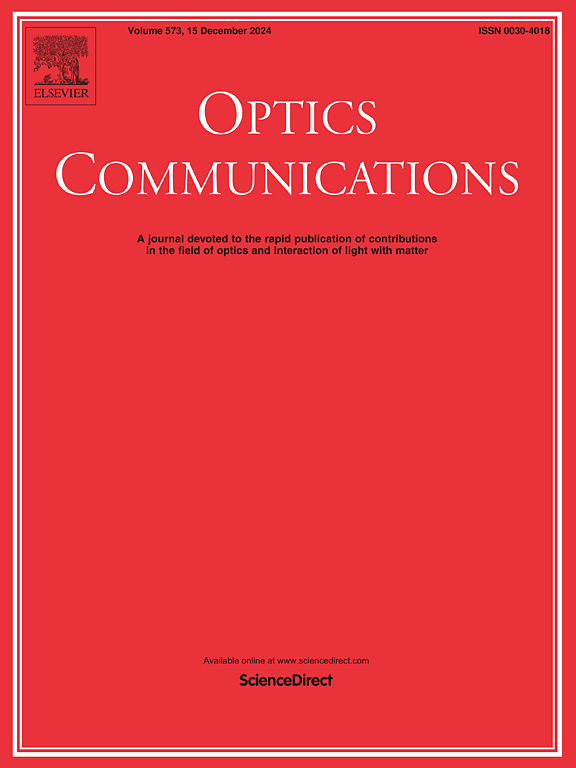Broadband high-resolution line-imaging spectrometer with a large working distance range
IF 2.2
3区 物理与天体物理
Q2 OPTICS
引用次数: 0
Abstract
A broadband high-resolution line-imaging spectrometer (BHLIS) is presented, which consists of only two identical linear microlens arrays, one linear stop array, one parallel planar transmission grating pair and one area array detector. The detector is divided into many small rectangular pixel arrays, each corresponding to one calculated wavelength and one target unit. The BHLIS can achieve high spectral resolution (of the order of 1 nm) over a broadband wavelength range (e.g. 250 nm–380 nm, or 400 nm–700 nm) in the ultraviolet–visible spectral region. For existing imaging spectrometers, the angular resolution does not vary with the measuring distance, but the larger the measuring distance, the lower the spatial resolution. However, for all measuring distances over a large working distance range, the spatial resolution in the vertical direction of the BHLIS is approximately equal to the aperture size of a microlens, and the spatial resolution in the horizontal direction of the BHLIS is approximately equal to the distance between the centers of two adjacent microlenses in a linear microlens array. Since the aperture size of a microlens can be very small (e.g. 0.32 mm, 0.2 mm, or smaller) and the corresponding distance between the centers of two adjacent microlenses in a linear microlens array can be very small (e.g. 0.36 mm, 0.24 mm, or smaller), the BHLIS can obtain a high spatial resolution. The BHLIS is a unique concept that uses only one frame of data to obtain both broadband fine spectra (in the ultraviolet–visible spectral region) and high-resolution spatial images of a target row over a large working distance range.
求助全文
约1分钟内获得全文
求助全文
来源期刊

Optics Communications
物理-光学
CiteScore
5.10
自引率
8.30%
发文量
681
审稿时长
38 days
期刊介绍:
Optics Communications invites original and timely contributions containing new results in various fields of optics and photonics. The journal considers theoretical and experimental research in areas ranging from the fundamental properties of light to technological applications. Topics covered include classical and quantum optics, optical physics and light-matter interactions, lasers, imaging, guided-wave optics and optical information processing. Manuscripts should offer clear evidence of novelty and significance. Papers concentrating on mathematical and computational issues, with limited connection to optics, are not suitable for publication in the Journal. Similarly, small technical advances, or papers concerned only with engineering applications or issues of materials science fall outside the journal scope.
 求助内容:
求助内容: 应助结果提醒方式:
应助结果提醒方式:


